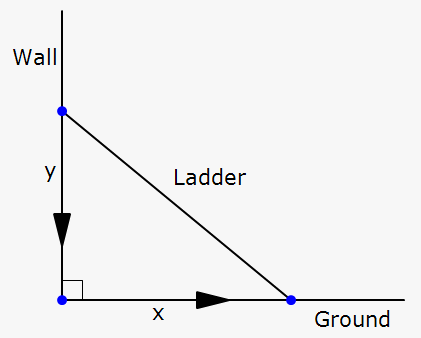Assume the bottom of a 16 ft ladder is pulled out at a rate of 3 ft/s. How do you find the rate at the top of the ladder when it is 10 ft from the ground?
1 Answer
It is sliding down at a rate of
Explanation:

Let us define the following variables:
# {(x, "Distance of bottom of ladder from the wall (ft)"), (y, "Distance of top of ladder from the floor (ft)") :} #
We are told that
The ladder is a fixed length (
# x^2+y^2=16^2 #
# :. x^2+y^2=256 #
Differentiating Implicitly wrt
# 2xdx/dt + 2ydy/dt=0#
# :. 2x*3 + 2ydy/dt=0#
# :. 3x + ydy/dt=0#
When
# :. x^2=156 #
# :. x=sqrt(156) " as " (x >0) #
And so substituting
# 3sqrt(156) + 10dy/dt=0#
# :. dy/dt = -3/10sqrt(156)#
# :. dy/dt = -3.74699 ...#
# :. dy/dt = -3.75 (2dp)#
The minus sign denotes that the ladder is sliding down, i.e., the height


